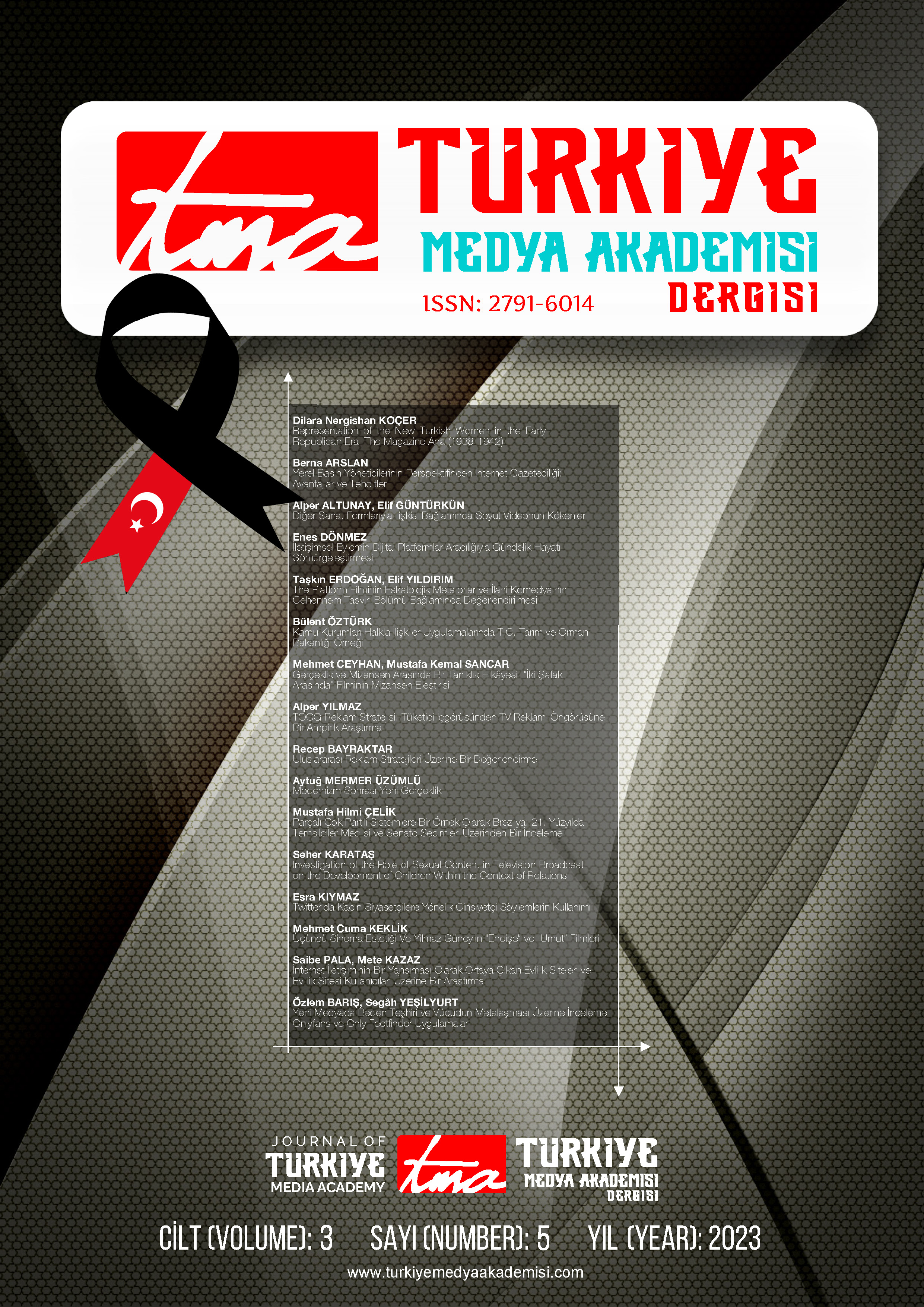THE ROOTS OF ABSTRACT VIDEO IN THE CONTEXT OF ITS RELATIONSHIP TO OTHER ART FORMS
DOI:
https://doi.org/10.5281/zenodo.7650822Keywords:
Video Art, Abstract Video, Video, Screen, Avantgarde ArtAbstract
Video has been a medium that inspires artists and expands their possibilities of expression in terms of its potential to manipulate, and it has often benefited from the traditions of its predecessor art mediums. Along with the digital transformation, the developments in technology have also significantly affected the possibilities of expression in art. The denial of the fixed facts and definitions prioritized by modernism by the oppositional culture of the 1960s led to the prominence of subjectivity, personal sense, and multi-layered meaning richness in genres fed from conceptual art. In this context, the abstraction of reality in many art forms, including performative arts, has come to the fore in the works produced by artists as an oppositional strategy. Due to its formal characteristics, video is a tool that can easily find its place not only in abstract art, but also in many different art forms. Abstract video, with its potential to appeal to different ways of seeing and different interpretations of meaning, is one of the art forms that artists frequently apply since the 70s. With the use of electronic synthesizers (visual effects mixers) and other technological advances, video, as a manipulative tool, gave the artist the chance to intervene instantly in understanding, giving unlimited possibilities to transform the usual norms of reality. Within the scope of this study, it is aimed to investigate the origins of abstract video and to reveal its relationship with other forms of art. In the study, the conditions in which video art emerged and the relationship of abstract video with other art forms were examined.
Downloads
Published
How to Cite
Issue
Section
License
Copyright (c) 2023 Journal of Türkiye Media Academy

This work is licensed under a Creative Commons Attribution-ShareAlike 4.0 International License.


